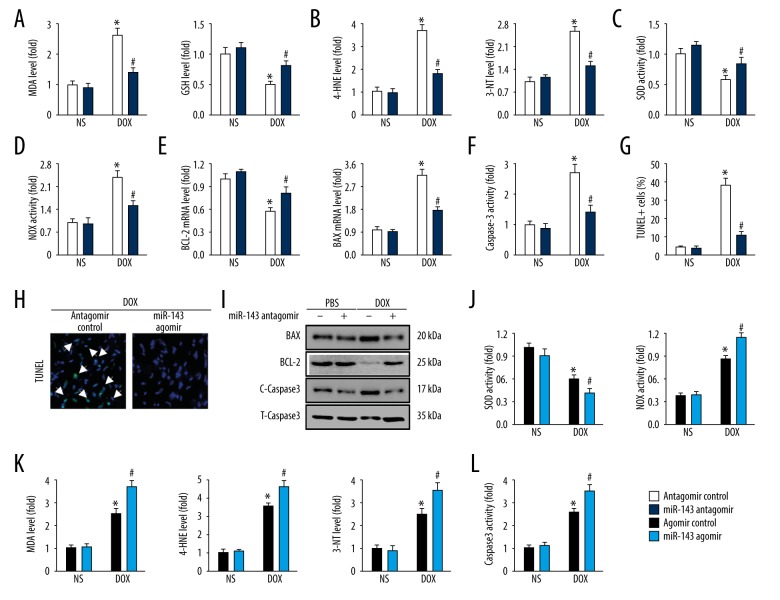Figure 3.
MicroRNA-143 (miR-143) regulated doxorubicin-induced oxidative stress and myocardial apoptosis in vivo. (A) Malondialdehyde (MDA) and glutathione (GSH) levels in the hearts in the mouse groups (n=6). (B) 4-hydroxynonenal (4-HNE) and 3-nitrotyrosine (3-NT) levels in the hearts in the mouse groups (n=6). (C, D) Superoxide dismutase (SOD) and NADPH oxidase (NOX) activities in the hearts in the mouse groups (n=6). (E) The relative mRNA levels of BCL-2 and BAX in the hearts in the mouse groups (n=8). (F) Caspase-3 activity in the hearts in the mouse groups (n=6). (G, H) Representative TUNEL images and the statistical analysis of TUNEL-positive cells in the mouse groups (n=6). (I) Representative immunoblot images in the mouse groups (n=6). (J) SOD and NOX activities in the hearts in the mouse groups (n=6). (K) MDA, 4-HNE, and 3-NT production in the hearts in the mouse groups (n=6). (L) The findings of caspase-3 activity in the mouse groups (n=6). Data are presented as the mean±standard deviation (SD) with the 95% confidence interval (CI). * P<0.05 versus the normal saline (NS)+antagomir control group. # P<0.05 versus the doxorubicin+antagomir control group.

